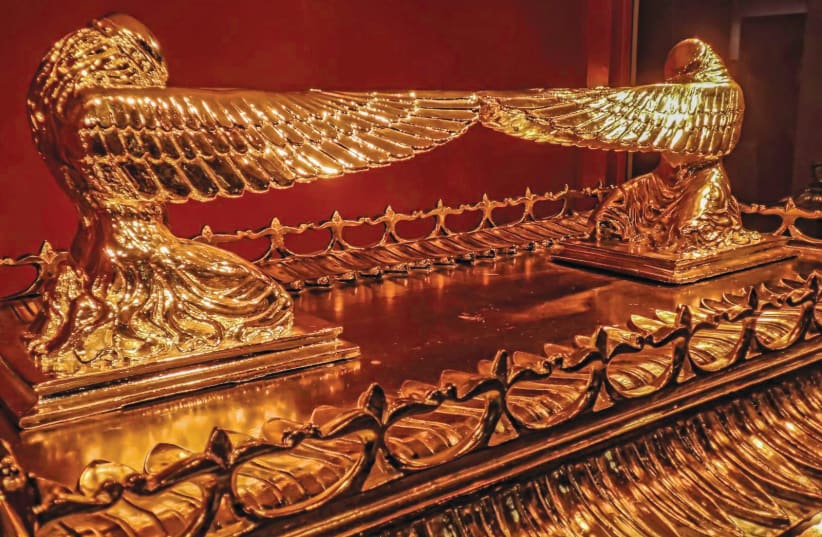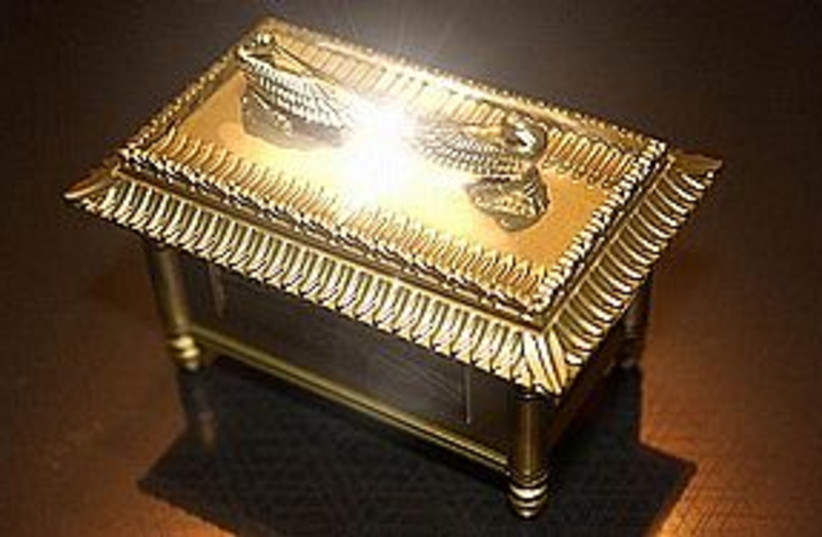“It was a city that was increasingly sprawling outside its Old City walls and a city that had a mixed and intermingling multi-faith population. A city with as many divisions within faiths as between them. A sacred city but by no means an entirely pious one,” writes Graham Addison about Jerusalem in the early 1900s, in his account of the Parker Expedition’s attempt to discover the Ark of the Covenant in Raiders of the Hidden Ark.
Enduring legacy
It was in these strained, occasionally corrupt and constantly changing surroundings that a peculiar group covertly bribed its way into an expedition to uncover the Ark and let loose a vast chain of repercussions. While the expedition lasted only three years, Addison sheds light on its enduring legacy and the factors that brought the expedition to believe they would succeed in uncovering the 3,000-year-old holy relic.
The last known location of the Ark of the Covenant was in the First Temple’s Holy of Holies. However, after the Temple’s destruction in 586 BCE, it disappeared.
Finnish scholar Valter Henrik Juvelius claimed to have decoded numeric ciphers in the Bible indicating that the Ark was hidden in the intersection of the water tunnels and canal that once carried blood from the sacrificial offering in the Temple.
Juvelius successfully convinced a number of British aristocrats, among them Montague Parker, to embark on an archaeological quest to locate the Ark. Many of them, Addison observes, were bored and “trying to make something of their lives.” For them, the expedition was “an exotic adventure to fill their time. It had elements of risk and danger. It was different.”
Bribery, nighttime digging and an escape
The expedition members were not archaeologists and did not bother to research previous digs in the area or to record their own excavations. What’s more, evidence indicates that they bribed Ottoman authorities to permit the excavations; the British ambassador to Constantinople wrote, “I suspect a good many people got fat over the business.”
Nevertheless, the expedition members proceeded to dig from what is now the City of David into ancient Jerusalem’s water tunnels and shafts, completely draining the Siloam Tunnel, diverting water from the Gihon Spring and other passages, and searching for a formerly submerged secret entrance. They found nothing, save some pottery, a piece of an Ionic column, old lamps, Roman projectiles and coins, and an ancient toilet.
Although it was forbidden to dig within the Temple Mount, Parker eventually managed to bribe authorities to allow the expedition to do so.
The expedition members dug for nine nights before they were discovered, just as hostilities between religions in Jerusalem were on the high due to Passover, Easter, and the Muslim Nabi Musa celebrations. Havoc ensued, with local uproar, demonstrations and the arrest of Temple Mount guards and the expedition’s middleman; the remaining members fled Jerusalem.
THIS INCIDENT left an enduring mark on Jerusalem’s Muslim population, encouraging, as Addison describes it, “a sense of Palestinian identity, centered on Jerusalem and the Haram al-Sharif.” He suggests that the scandal helped bring Muslims together under a unified front to defend al-Haram al-Sharif in an “emerging sense of Palestinian nationalism.”
The Jewish population felt threatened by the Parker Expedition’s encroachment as well, at the time recruiting Baron de Rothschild to invest in parallel digs and ensure Jewish relics didn’t fall into Christian hands.
Seventy years later, Rabbi Shlomo Goren and Rabbi Yehuda Getz, the rabbi of the Western Wall, repeated the expedition’s stunt, digging beneath the Temple Mount secretly, until they, too, were discovered.
While the expedition may have provoked much outrage, it also provided a service to the local population, employing hundreds in the project and filtering the water in the Virgin’s Well and Siloam Pool, after having drained and cleaned the area. They even rebuilt steps to allow for better access to the spring.
The tunnels the Parker Expedition dug out were meticulously mapped by Father Vincent, a French archaeologist and monk, and provided the pillars for future archaeological digs in the area for the next century.
The expedition "curse"
Most notably, in 1995, Israeli archaeologists Ronny Reich and Eli Shukron continued digging in the same water tunnels and shafts, eventually opening them to the public in the City of David.
“That these visitors walk through the Siloam Tunnel and see the Warren Shaft system is a direct legacy of the work the Parker Expedition carried out,” Addison writes.
The legacy of the expedition members themselves was perhaps less fortunate.
“Within a few years, three were dead, one was mad, two were bankrupt, one divorced and another deported,” Addison notes. As for Juvelius, he continued decrypting additional ciphers that never availed to any discoveries until the end of his life.
While the narrative of the Parker Expedition is in and of itself rather eccentric, Addison’s account does not fall short of further outlandish tales, Ark theories, anecdotes, and snippets from famous authors of the time referencing members or events relating to the expedition.
Whether the Ark is hidden beneath Jerusalem is unknown. However, the belief that it has been concealed and preserved beneath the city for 3,000 years spurred an expedition so bizarre, it attracted the world’s attention and caused a ripple effect whose reverberations are still felt today.
Raiders of the Hidden ArkBy Graham AddisonEdgcumbe Press298 pages; $12.42

